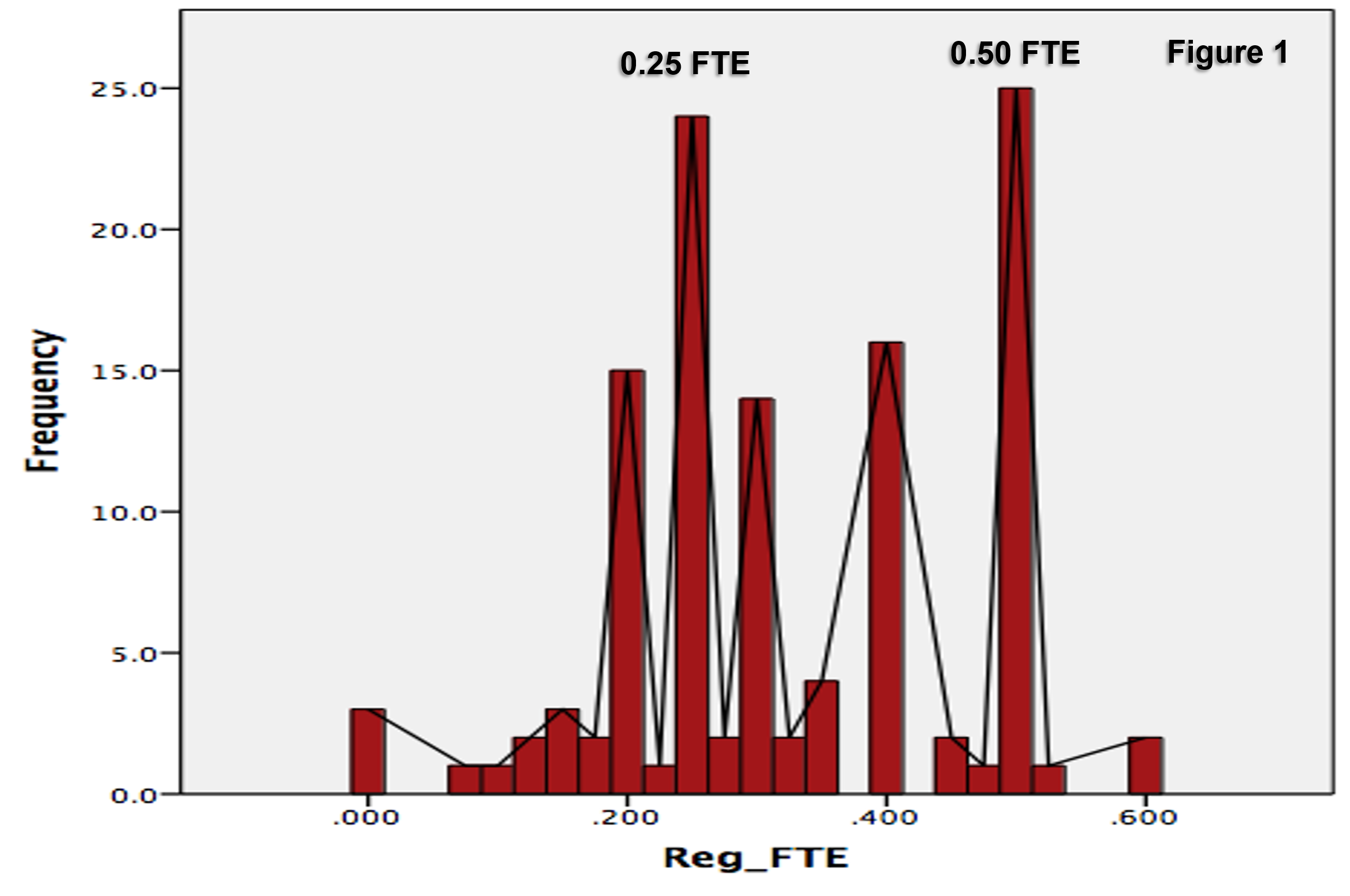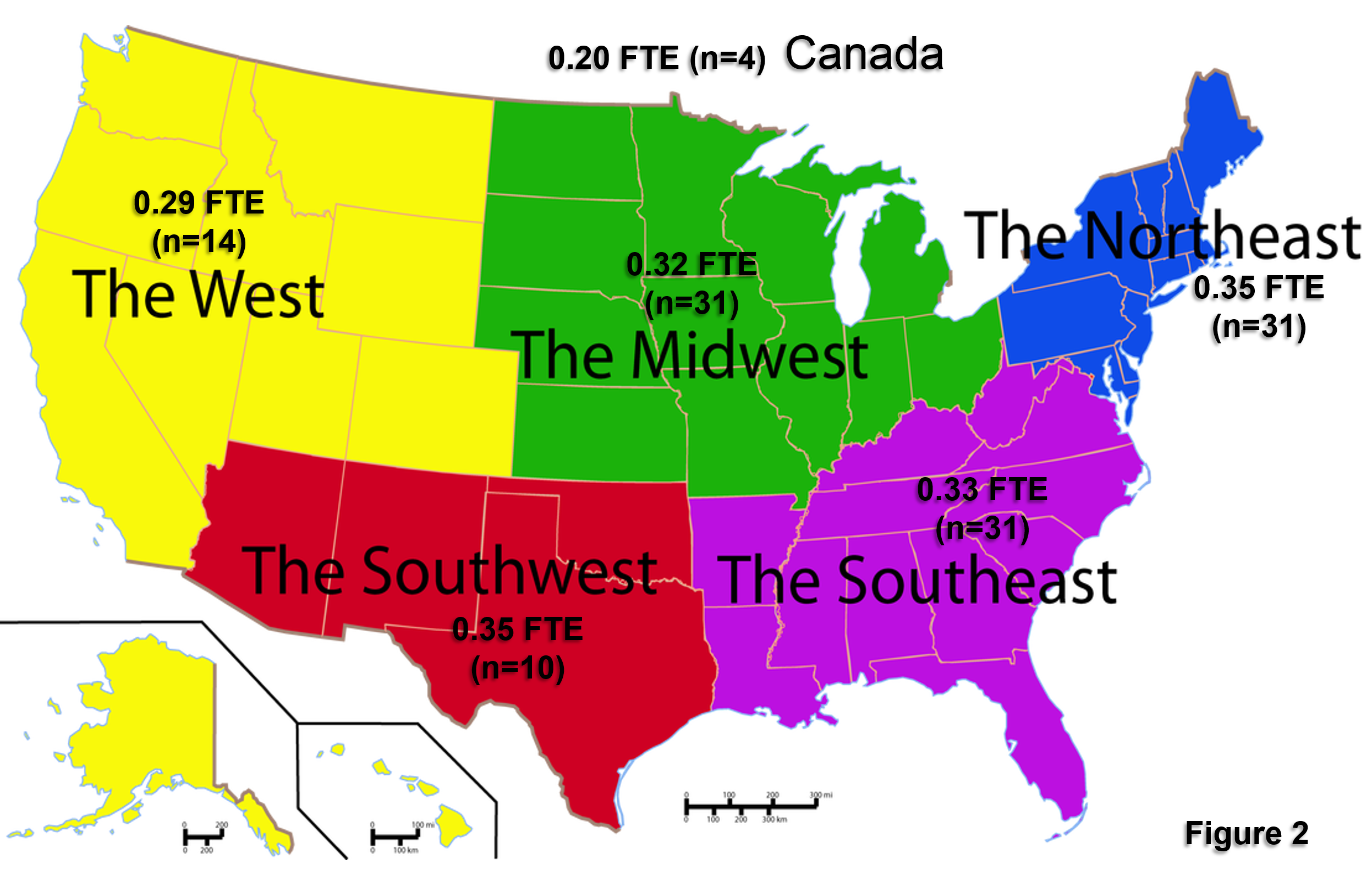Background: The role of the clerkship director (CD) in Internal Medicine (IM) has been increasingly recognized and valued as a ‘legitimate pathway towards academic advancement. We hypothesized that salary support for the IM CD has lagged behind the recommended 0.5 full-time equivalent (FTE) put forth by Pangaro and colleagues.
Methods: In 2016, Clerkship Directors in Internal Medicine (CDIM) members on the CDIM forum were surveyed online about the salary support for the primary IM CD at their respective institutions. Additional information about institutions was extracted from their websites or by directly contacting them. Institutions were classified into 6 geographical regions (including Canada), 3 class sizes (<100, 101-200 and >200), public or private funding, and strength of FTE support (high>0.4, moderate 0.2-0.4 and low≤0.2). For statistical analysis, t test was used for continuous variables and chi-square test, Mann Whitney U for categorical variables using SPSS ver 22.0.
Results: Response rate was 90% (n=121/134). Three-fourths of respondents were current IM CDs, while the remainder included clerkship administrators, former CDs, and other educators. Two-thirds of institutions were publicly funded. The overall mean FTE for CDIMs was 0.32 (range 0 to 0.6). Mean FTE funding for private vs public was 0.34 vs 0.32. (p=0.61). Geographically, mean FTE support was: Northeast 0.35 (n=31), Midwest 0.32 (n=31), Southeast 0.33 (n=31), Southwest 0.35 (n=10), West 0.29 (n=14), and Canada 0.20 (n=4). One-fourth of institutions (31/121) had high support, 22% (27/121) had low support, while just over half had moderate support. Northeast region (32% [10/31]), school size >200 (40% [8/20]), and private (28% [12/43]) institutions had higher likelihood of high support (>0.4 FTE). Institutions with public funding (24% [19/78]), from Canada (75% [3/4]), and class size 101-200 (27% [21/79]) were more likely to have low support (≤0.2 FTE).
Conclusions: Our results suggest that only a quarter of Internal Medicine Clerkship Directors receive sufficient salary support. Geographical location, mode of institutional funding and class size are important determinants for predicting better support. Future surveys exploring variation in clerkship structure and administrative support may help account for institutional differences.


